Heidi Chiavaroli's Blog, page 2
January 6, 2025
What is the season of Epiphany?
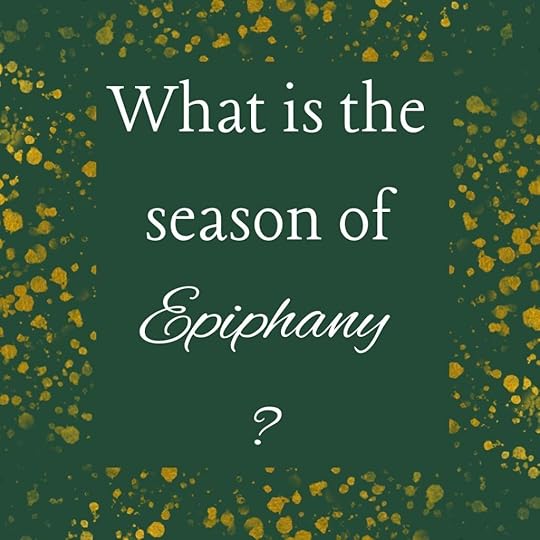
Up until recently, the liturgical season of Epiphany meant little to me. One of my Catholic grandmothers refused to take her Christmas tree down until Epiphany, insisting that Christmas didn’t end until January 6th, when the wise men arrived to see Jesus.
I didn’t think much of the tradition. I often had my tree down by New Year’s, a kind of cleaning up of the last year and welcoming in the new. I wasn’t thinking of a church calendar—I was thinking of the “regular-people” calendar. 😉
But the last few years I’ve been drawn to the marking of the sacred seasons. The liturgical calendar offers a reminder of the rhythms of my faith, rhythms that connect me to the global church and remind me of the magnificence of the gospel story. Though I had thrown off any remnants of liturgy with my Protestant faith, I’m finding that there’s much value in observing the seasons of the church.
I still have so much to learn, but I thought to bring any curious readers along with me on my journey beginning today, January 6th, the day of Epiphany.
But what, really, is Epiphany about? Is it only a day that officially ends Christmas? Is it only a day to remember those ancient travelers with their gifts of gold, frankincense, and myrrh?
Turns out, it’s actually much more than that!
And guess what? This day is more than a single day (this was news to me!). It marks the start of an entire season that doesn’t end until Fat Tuesday—the day before Ash Wednesday. That makes this season especially, and maybe appropriately, long (in fact, this season won’t end until March 4th this year, 2025).
The word Epiphany means “to bring light” or “to cause to appear.” It asks us to sit deeply in the incarnation, to observe even the dark parts of it (thinking of Herod killing the Bethlehem baby boys), and the dark parts of ourselves. But then it asks us to glimpse God’s glory and light made manifest to the whole world through Jesus—God in human form.
In his book Living the Christian Year, Bobby Gross says that Epiphany “is a time both to inhabit the Story and to tell the Story, for in the telling itself we are further enlightened.”
I love that!
This season is a beautiful time to think about God’s glory being revealed. We can think of the Magi visit and marvel that this is a king meant for all people. We also meditate on the baptism of Jesus by John in the Jordan (observed on the first Sunday after Epiphany). We remember the prophecies of Simeon and Anna (celebrated on February 2nd as Candlemas) as Jesus is presented at the temple and called a “light of revelation to the Gentiles.” We meditate on the turning of water into wine at the wedding feast in Cana that exemplifies his power over creation and invites his disciples to see and believe. We think of his teaching on the Sermon on the Mount and his healing of the outcast. Lastly, on the final Sunday before Ash Wednesday, we meditate on the Transfiguration, a very great climax that reveals Jesus as God’s Son while also setting us up for the season of Lent.
Through all this, we better glimpse his amazing glory. And what we glimpse, we gladly share with those around us.
May this Epiphany draw you ever closer to his love and glory.
“O God, by the leading of a star you manifested your only Son to the peoples of the earth: Lead us, who know you now by faith, to your presence, where we may see your glory face to face; through Jesus Christ our Lord, who lives and reigns with you and the Holy Spirit, one God, now and for ever. Amen.”
Book of Common Prayer
The post What is the season of Epiphany? appeared first on Heidi Chiavaroli.
July 19, 2024
Thirsting for More

I’ve been spending a lot of time at Jacob’s Well with Jesus and the Samaritan woman. This was a challenging story to keep within my word count. My research led me to think and pray on so many different nuggets, so despite a looming deadline, I can’t move on until I digest some of my thoughts in writing, as I often do. 🙂 Here are just two musings:
1) This story comes to us from John and is told shortly after Nicodemus (super Pharisee) comes to Jesus at night. I love how John gives us a sharp comparison in this setup. With Nicodemus, we see Jesus addressing the religious systems. With the Samaritan woman, we see Jesus addressing those who have been made enemies by those religious systems.
Jesus doesn’t feel compelled to pick a side (love that about him!) or fit into a preconceived box that fits the expectations of either Nicodemus or the Samaritan woman. He calls out the weaknesses of both. He refuses to make excuses for either. And yet, for both, he opens a door to a better way.
I want to be like this. In my family, in my church, in my community, in my politics, in my writing, I want to be a light for a better way. (I’m meditating a lot on the Sermon on the Mount this year and I have a strong inkling THIS is the better way.)
2) Jesus steps into the Samaritan woman’s life with a basic human need. He asks her for a drink.
I’ve read this story so many times, but I never caught this until now. This is actually a big deal—not just because he’s a Jewish rabbi and she’s a Samaritan woman and the two groups rarely associate with one another—but because, um . . . he’s Jesus. He could just cause it to rain or create water from rocks. But he doesn’t. He chooses to step into community with this outsider.
I can’t help but think how different this is from the way we as Christians often see our place in the world today. We think we can’t show weakness, that we must fight for our worthy causes and have all the answers when it comes to faith, which is actually pretty ironic since faith is belief without seeing. I don’t want to be known for having all the answers (spoiler alert—I don’t) or for not ever struggling with doubts (I do). I want to be known by love. (John 13:35)
Sri Lankan theologian Daniel T. Niles said that, “The only way to build love between two people or two groups of people is to be so related to each other as to stand in need of each other. The Christian community must serve. It must also be in a position where it needs to be served.”
This is radical. This is not what we might expect. And sadly, I don’t see a large part of the American church (all too often, myself included) walking this narrow path. But Jesus was not afraid of weakness, and I think that can scare us a little because it requires faith to lean into.
So, I’m praying. I’m praying for wisdom for all of us. And perhaps the next time we’re tempted to fight our neighbor who has differing views on us about the current hot-topic social issue, we can remember Jesus asking for a drink from this woman whom his culture told him to hate. Perhaps we can think of a well-respected father running to a lost son and throwing him a party (something no respectable man in Jesus’s day would have done for an ungrateful heir). Perhaps we can think of Jesus on the cross, asking God to forgive those who pinned him there.
This is not a weak faith. It is a strong faith. And it is a picture of the upside-down kingdom of the Great I AM.
I don’t think I’ll ever think about this story the same way again.
Photo by RENZILIU FUN on Unsplash
The post Thirsting for More appeared first on Heidi Chiavaroli.
June 18, 2024
The Way Back is Here!
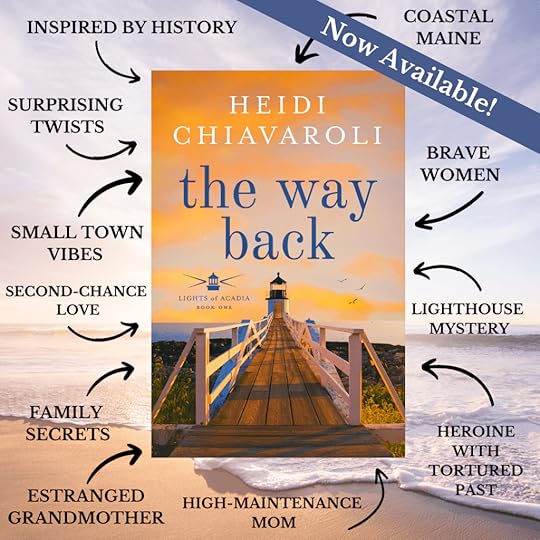
I still remember the day my sister (then a teenager) told me that she’d jumped off one of the Newport cliffs on the Cliff Walk with a bunch of her friends—mostly older boys, mostly boys I had a crush on at one time or another!
I was mortified. What if she had hit a rock? What if she had drowned and I never saw her again?
Whenever I visited the Cliff Walk after that, I tried to pick out the place where she’d jumped. I’d shiver just imagining it. Years later, still imagining different scenarios in my head, I finally sat down and wrote a fictional story inspired by my sister’s experience.
The Way Back is my latest dual timeline novel and the first book in my Lights of Acadia series. Set in Maine, it features two women—Laney, my contemporary cliff-jumping heroine, and Abbie Burgess, my true-to-life historical heroine who lived more than a hundred years ago.
As with many of my books, this novel deals with some tough topics—self-harm, neglect, and moving forward in forgiveness. But as alway, my intent for this story is to shine light in the darkness. (And really, what better way to do that than through a story about lighthouses?!)
I hope you enjoy. I hope Laney, Abbie, and Jason wrap themselves around your heart as you journey with them through their struggles, triumphs, pain, and joy. Thank you for reading. ♥️
The post The Way Back is Here! appeared first on Heidi Chiavaroli.
March 30, 2024
Of suffering and scars . . .
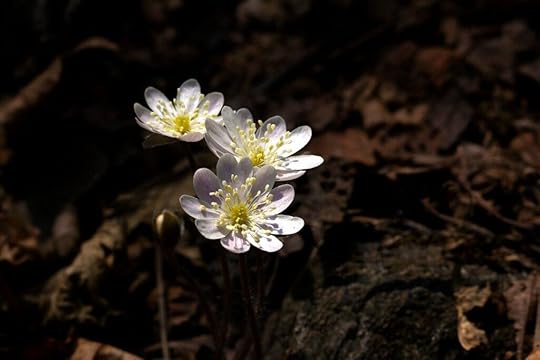
I have a scar on the bridge of my nose. I don’t recall getting it, but my parents tell me I banged my nose on a coffee table when I was two and had to get stitches at the hospital.
I don’t ever remember a time not having the scar. In fact, if I looked in the mirror and saw it missing, it would catch me off guard. That scar is a part of me.
My main character in my upcoming release, The Way Back, my main character Laney has quite a history and a battle with some of her scars. Not just because they are difficult for her to allow others to see, but because they remind her of a painful part of her past.
This Lenten season as I finished up Laney’s story, I found myself focusing on the role of suffering in the life of a person of faith. How do we reconcile the two? What purpose can suffering play in our faith journey?
These are questions I don’t have complete answers to. As I recently walked through a time of trial involving some not uncommon but challenging health issues, I found myself a bit frustrated with God. Doesn’t He know I have things I want to get done for him?! I don’t have time for sleepless nights and doctor’s appointments and battles with anxiety. Who does?
Oh my.
The thing I love about Jesus is he’s so incredibly gracious. Every time I’ve gone through any time of suffering, he draws me closer. Why is that? Am I just desperate? Yes, but maybe that’s the idea. It’s in times of pain that I’m grasping for his hand. It’s in times of trial that I’m depending on him not to let me drown.
There’s comfort in arms that know the humaness of all I’m walking in and struggling with. He knows about suffering. He has the scars both inside and out to prove it. And yet those scars are part of who he is. They’re a symbol of his love and his victory over death.
I keep thinking of the disciple Thomas touching Jesus’s scars, needing to draw closer to his rabbi’s woundedness to realize the enormity of the miracle. Realizing that Jesus’s scars are indeed an important part of him, but they don’t solely define him. Love does. Resurrection and restoration do. And if Jesus rose from the dead, then everything’s going to be okay. His Kingdom is inaugurated here on earth and no matter where or how this email finds you . . . no matter if you’re feeling pretty good about things today or your deep in the bowels of suffering and depression, he is with you, inviting us into this beautiful, exciting story God started at the beginning of creation.
Happy Easter!
With Hope,
Heidi
Photo credit: Image by dae jeung kim from Pixabay
The post Of suffering and scars . . . appeared first on Heidi Chiavaroli.
December 17, 2023
To Love One Another
 I will always remember the day. The dress, the man, the long walk down the aisle, the church crowded with friends and family.
I will always remember the day. The dress, the man, the long walk down the aisle, the church crowded with friends and family. With so much happening, it’s not surprising I couldn’t focus much on the sermon. I was standing with my high school sweetheart (soon-to-be-husband) in front of our guests for the entire time, and all I remember is my excitement and a slight ache in my back from trying to keep my posture perfect.
If we didn’t have the video, I might not have known the treasure I nearly missed. Our reverend, Dana Boynton, gave a beautiful message on love that morning, twenty years ago. Watching the video weeks later, I could actually mull over the importance of it.
He spoke of an agape love.It was the first time I heard the Greek word. Agape is so much more than romantic love. It’s more than close friendship or brotherly love. In the Bible, it is nearly always tied up in the loving character of God. Since “God is love” (1 John 4:8) it’s almost as if he can’t help loving. Independent of whether or not we act in a loving way toward him. It’s his nature; who he is and who he will forever be.
As I’m finishing up my Old Testament biblical fiction novel, I’ve been researching a bit on the Shema, one of the first prayers taught to Hebrew children and one spoken often throughout one’s lifetime. It comes from the book of Deuteronomy and in it is one sentence that is the basis of the Jewish faith.
Hear, O Israel: The LORD our God, the LORD is one. You shall love the LORD your God with all your heart and with all your soul and with all your might.
When Jesus arrives on the scene many years later and one of the Pharisees tests him by asking what the greatest commandment is, he recites this command. “Love the Lord your God with all your heart and with all your soul and with all your mind” (Matthew 22:37).
But then he adds something. Because so many times we miss the point of loving God, don’t we? And what is one of the biggest parts of loving God?
Jesus answers. “Love your neighbor as yourself.”
And when asked for a clear definition of who our neighbor is, Jesus tells the story of the Good Samaritan.
Huh. So loving God isn’t just about going to church and tithing my mint and cumin. It’s not just about fasting and praying and having devotions and doing all the religious things. It’s about an action. It’s about opening my doors and my wallet and my country to those who might impede on my space and my rights. It’s about love, however comfortable or uncomfortable that may make me feel.
I love St. Thomas Aquinas’ definition of agape love. He says it is “to consistently will and choose the good of the other.” That’s not always easy. Not in marriage, not in any relationship, not in life. But that’s what Jesus modeled. Loving his enemy. Loving those considered outcasts. Emulating the heart of God.
It was the power of agape love that came down to Bethlehem that long ago Christmas night. It was agape love that allowed himself to be nailed to Calvary’s cross—an act that willed our good even when we didn’t want it. It was the power of agape love that pleaded with his father for the forgiveness of those whose hands drove the nails. And it was the power of agape love that broke open that tomb in glorious hope and victory.
It was so much more than words, it was action. My prayer is that as we receive and meditate on God’s love this Advent season, that it would overflow into the world around us.
God is light and in him is no darkness at all.
1 John 1:5
Merry Christmas!
The post To Love One Another appeared first on Heidi Chiavaroli.
December 10, 2023
Joy to the World

As a child, I can remember a few distinct times I felt joy—a sort of elated happiness that bubbles up inside you (my completely inadequate definition).
The first time was in second or third grade, while singing Joy to the World beside my father on Christmas Eve. That year had been tough and having my father’s presence beside us on that most holy night created an immense feeling of completeness like none I had ever known.
Growing up, I’ve recognized joy in marrying my husband, in the births of our sons, in quiet moments of communion with God, in enjoying the beach or the woods.
The definition of joy is a feeling of great pleasure and happiness.
In the Bible, there’s many Hebrew and Greek words which convey joy, but studying the source of that joy is what’s fascinating.
Sometimes, joy is celebrated in the good things in life. A beautiful sunrise, good food, family, and friends. But like peace in last week’s word study, joy is not simply the absence of bad things. We are all too keenly aware that life is full of the bad. Death and grief, anger and selfishness, to name only a few. And yet, in scripture, we see God’s people often being joyful in the face of such things.
While in prison, Paul wrote:
I will continue to rejoice,for I know that through your prayers and God’s provision of the Spirit of Jesus Christ what has happened to me will turn out for my deliverance. I eagerly expect and hope that I will in no way be ashamed, but will have sufficient courage so that now as always Christ will be exalted in my body, whether by life or by death.
Philippins 1:18-20
Whether by life or death. That’s radical faith, and I love that his joy is tied to another one of our previous words, hope.
It’s not about everything going right, it’s about looking toward God’s love and the hope of a future reality coming to pass—a reality rooted in what God has already done and what he says he will do. In the midst of my intense headache. When I’m worried about my kids or book sales or I’m having a disagreement with a loved one.
It’s totally significant that when Jesus of Nazareth was born, it was announced as “good news that brings great joy.” After Jesus’s resurrection, his followers encountered much hardship and persecution, many times “rejoicing in the Lord” nonetheless.
This is more than a happiness I can summon up from my own will, and Paul says as much. This must be a work of God’s Spirit.
“May the God of hope fill you with all joy and peace as you trust in him, so that you may overflow with hope by the power of the Holy Spirit.”
Romans 15:13, NIV
Maybe it’s just me geeking-out over words, but maybe it’s the joy of the Spirit—because that’s three of our Advent words all in one verse!
Okay, one more thing just to be clear. All this joy talk doesn’t mean forcing happiness or brushing off grief and sorrow. We’re human. It’s healthy to sit with these emotions, even to feel. When Jesus was in the garden the night before his crucifixion, he grieved. He felt the separation and suffering about to be his. And yet, he trusted his Father.
To say Jesus found joy in this at first might seem a bit of a stretch. Joy in dying? And yet, because he knew his death and resurrection would usher in a new kingdom, one where death is no more, there is a sense of joy here. A movement toward hope, a faith in that which we can’t completely see or understand and yet, because of past evidence, choose to firmly root our faith in.
Jesus—and joy—have come into the world. May we meditate on these truths this Advent season!
(A big thank you to the Bible Project for helping me whittle down to the meaning of some of our favorite Advent words–hope, peace, joy, and love.
May this season fill you with all four of these life-giving words.)
The post Joy to the World appeared first on Heidi Chiavaroli.
December 3, 2023
Peace on Earth and Mercy Mild

There’s no place that reveals my sometimes-obsessive need for control more than the passenger’s seat of my car. I don’t remember having anxiety in the passenger seat until after I became a mother. Something clicked in my brain then, and to my husband’s dismay, that something caused me to grip the handle above the passenger window with a newfound relish.
I hate that I feel this way. I trust my husband. He has a perfect driving record. He drives much more than I do.
Though I’m a long way from calm in these moments, there are a few things that have helped:
~ Closing my eyes and simply trusting that my husband can handle the aggressive New England drivers surrounding us on the highway.
~ Praying.
~ Holding (okay, clutching like my life depends on it!) a smooth beach stone I keep in the small compartment of the passenger door.
I found the stone last summer and couldn’t bring myself to leave it at the beach. It was smooth and oval, a perfect fit for the palm of my hand. I decided to keep it in the car and I feel instantly calmer when I hold it. Not exactly peaceful, but not quite crazed with worry, either!
The definition of peace is freedom from disturbance. But biblical peace suggests something more than simply no war or disturbances. Something more than the absence of harried New England drivers on the road to shake up my anxiety.
The Hebrew word for peace is shalom. It’s more than the absence of conflict–it’s a wholeness, a fullness. Kind of like the state of my stone. Smooth and complete, with no interruptions or cracks.
But let’s face it. Lots of humanity can be broken. Our bodies, our circumstances, our relationships. Not to mention the disorder of the world in general. The environment, storms, natural disasters, disease, injustice, and death itself. There’s a lot more on this earth that’s broken than just humanity.
If you’ve read the Old Testament, you know it was rare for Israel to have shalom. But some of the prophets saw what their people lacked, what they so badly needed. Even Jeremiah prophecies a coming hope of a new covenant that would be written on their hearts.
Isaiah says a child-king would be born that would be called, “Wonder of a Counselor, Mighty God, Father of Eternity, Sar-Shalom (Prince of Peace).” (Isaiah 9:6, CJB) He goes on to say that “there will be no limits to the wholeness (or shalom) he brings.” (Isaiah 9:7, MSG)
No limits to peace? I’m listening, Mr. Isaiah.
Seven hundred years after Isaiah prophesied these words, an angel would appear on a countryside field to a group of shepherds and tell them not to be afraid, that a Messiah God had been born.
As if to seal the deal, a host of angels appeared, singing, “Glory to God in the highest heaven, and on earth peace to those on whom his favor rests.” (Luke 2:14, NIV)
Jesus would grow up and teach some radical stuff to his followers. And when they were confused by it and even scared for a future without him, he told them, “I have told you these things, so that in me you may have peace. In this world you will have trouble. But take heart! I have overcome the world.” (John 16:33)
He would overcome. He would make us whole. He would restore our broken relationship with God, with one another, and even with his creation. And while we still wait for the full reality of his Kingdom, we are not without hope. We are not without peace.
And because he brings this shalom, we also are called to be shalom. It gives me comfort that anytime I am working for peace—whether it be in relationships, in a situation I don’t have control over (hello, passenger seat!), or whether it be working to cultivate the peace of the earth in caring for it—that means I’m working with God toward the full restoration and completeness of his Kingdom. I love that!
May this advent season find you in a state of shalom on earth because of his shalom on heaven and earth.
(A big thank you to the Bible Project for helping me whittle down to the meaning of some of our favorite Advent words–hope, peace, joy, and love.
May this season fill you with all four of these life-giving words.)
The post Peace on Earth and Mercy Mild appeared first on Heidi Chiavaroli.
November 26, 2023
A Thrill of Hope
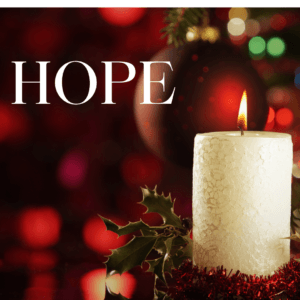
Hope is a word we tend to use a lot. I use it a lot.
I hope the Ice Cream Barn is offering their chocolate peppermint ice cream today.
I hope my editor likes the manuscript I turned in.
I hope that medical test comes back negative.
I sign my books “With Hope.” My brand tagline is “Finding Hope in a Story.” I guess I’m just an all-around hopeful person!
Hope is defined as a feeling of expectation; a desire for a certain thing to happen. And as it turns out, hope is an important part of being human. Often, what causes us to get out of bed in the morning can be found in purpose and hope—an expectation that there is reason to get out bed.
But the hope we’re focusing on in the first week of Advent is a bit different. It comes from the Hebrew word yakhal, which means waiting. Or sometimes, the Hebrew word qavah, which has more of a connotation of tense expectation while you wait.
This is more than just hoping my favorite ice cream is waiting for me at the store. The Old Testament is abounding with these two words. The book of psalms is scattered with them. In Psalm 62, David says,
For God alone my soul waits in silence,
for my hope is from Him.
and in Psalm 39, we see the core of this biblical hope.
What else can I hope for? You are my hope.
You are my hope.
I love that. Circumstances might not look good, but David’s hope is not based on what’s happening around him. Instead, it’s based on the character of God.
All of this hope is looking to what God has done in the past. It’s not based on a hazy hope, but a hope grounded on who God has already proven himself to be. In the New Testament, Jesus’s followers fostered a similar hope. They had seen the miracles with their own eyes. They had seen his blood poured out on Calvary. And they had seen the empty tomb—that portal to hope that would sustain many, even many today. Their hope wasn’t foolish. It was based on actual evidence. It was a living hope, not only for humanity but for a future and complete restoration of a broken world. It’s a hope on what God has done in the past as a token of what will come in the future.
So, here, in our first week of Advent, we’re waiting once again. But it’s a hope-filled waiting. A waiting for another celebration of Christmas, yes, but a waiting for that glorious day when heaven and earth unite under a perfect Creator’s rule. I don’t know about you, but that certainly gives me a thrill of hope.
May the God of hope fill you with all joy and peace as you trust in him, so that you may overflow with hope by the power of the Holy Spirit. Romans 15:13
(Thank you to the Bible Project for helping me whittle down the Hebrew meaning of the word hope!)
The post A Thrill of Hope appeared first on Heidi Chiavaroli.
August 9, 2023
An Interview with a Penikese Kid
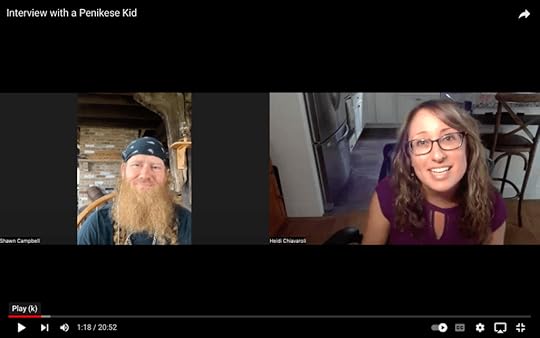
“I think most kids who came out here probably felt a connection when they heard the story of the leper colony because they were sent here against their will . . . you still felt like an outcast. So I always felt a deep connection with the history of them, especially the leper colony.”
It was such an honor to speak with Shawn Campbell, a 1999 student at the Penikese Island School and a current caretaker of the island. As most of you know, Hope Beyond the Waves dives deeply into the history of the island, primarily the leper colony that resided on Penikese in the early twentieth century. But the modern-day story has a connection with the Penikese Island School—a school Shawn attended back in 1999.
It was wonderful to hear some of Shawn’s story. Check out his YouTube channel for some great videos of the island! (And look at this lovely picture he sent me, taken from the island!)
Interview: https://www.youtube.com/watch?v=u0ZsNiBMbiE
Shawn’s YouTube Channel: https://www.youtube.com/@PenikeseKidd
Shawn’s Instagram Page: https://www.instagram.com/penikese_kidd/
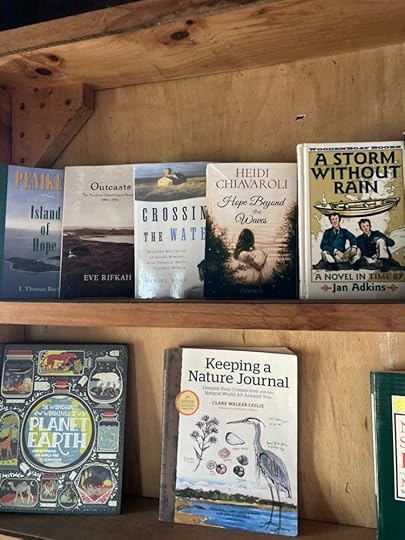
The post An Interview with a Penikese Kid appeared first on Heidi Chiavaroli.
April 15, 2023
Do you remember?
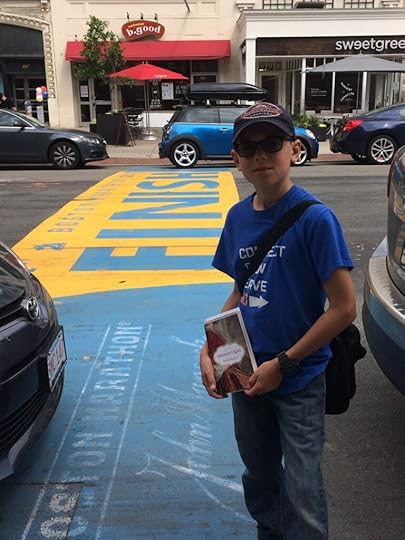
I was hiking in the woods with my two boys, my mother, and my sister when my brother-in-law called and told us there’d been a bombing in Boston, at the marathon. I still remember the terror as I tried to wrap my mind around it. I knew someone running in the marathon. I’d always wanted to run in it (but could never qualify).
What’s more, the Sandy Hook shooting had occurred just a few months earlier. This particular unfathomable tragedy had struck me hard and deep. Maybe because of the horror of it all, perhaps because my own boys were the same age as many of the victims.
After Sandy Hook, I cried myself to sleep for days. One of the curses of being a writer is having an overactive imagination, and in this instance, my mind would not let me rest as I thought of the tragedy, of the children and families affected. How could God let this happen?
By the time the bombing happened, I was really shaken up—and my faith, which I had once considered strong, was also shaken up. I started to become consumed with the potential for evil in the world. I became distrustful, expecting the worst from people. It was a terrible place to live.
In the days following the bombing, when one of the brothers was still on the loose, I had a knock come at my door. I looked out the tiny window of my front door to glimpse dark hair beneath a familiar-looking black-and-white baseball cap. It was Thursday, April 18, 2013, three days after the Boston Marathon bombing. Pictures of the brothers were all over the news, investigators searching for clues to where the two suspects could be—anywhere, it seemed.
Quite likely, at my front door. I lived only half an hour away from where the younger brother went to school, and with all my thoughts about evil finding me, I was sure it had in that moment.
Ducking down, I grabbed the phone and ushered my young sons into their bedroom, where we hid.
Now, despite my sons assuring me that they could take “the bad guy out” with their NERF guns, I called the police. Not long after, two officers crept into my backyard, guns drawn, searching my shed. They found no one and later tracked down a young tax assessor who admitted he had come to our house to check on renovation progress.
I felt foolish, and just a little crazy. But even after news stories finally stopped talking of the bombing, the feeling of fear didn’t go away. Yet I was a Christian, claiming to put my faith in a loving God. Why then, did I doubt Him? And how could I walk in faith while clinging to fear as my companion?
So, writers do this thing (or maybe it’s just me), where we might not want to face what’s going on in our own lives, but somehow facing it in a story seems less intimidating. So I turned to my writing (and my sixth manuscript attempt at publication) for answers to the question, “How can I conquer fear?”
In the process of answering this question, two women—centuries apart—were birthed. Annie is a Boston Marathon bombing victim, wondering how she will ever get past the bombing, and the subsequent choices she has made to separate herself from her family, including a niece who lost a leg in the bombing. The ring given to Annie the day of the bombing becomes an idol to her. Liberty is a woman wondering how she will ever get past the death of her brother in the Boston Massacre, and the subsequent choices she has made in stealing a ring from a man (a British officer) who has shown her nothing but kindness.
Both women are bound with chains they were never meant to carry. Both women look to the ring and to themselves to find the strength they know they lack. But of course a piece of metal or even our abilities won’t deliver us—as I learned very early on—from fear and weakness and inadequacy.
And through the journeys of these two fictitious women, along with some amazing support and encouragement from loved ones, I began to breathe again. To glimpse the true freedom won for me long ago. And despite the popular slogan of “Boston Strong” bandied about everywhere I looked, it had nothing to do with my own strength at all.
Jesus, particularly in the Sermon on the Mount, makes promises to those who don’t feel especially strong.
“Blessed are the poor in spirit,
for theirs is the kingdom of heaven.
Blessed are those who mourn,
for they will be comforted.
Blessed are the meek,
for they will inherit the earth.”
What God offers is for the weak and the broken. In fact, without realizing our brokenness, we won’t realize the enormity of God’s grace.
I often think I can look to myself for strength. Or if not myself, then my great faith. But maybe it’s not how together I have it, or even how big my faith is. Maybe it’s who I put my faith in.
I’m grateful for this message that God wrote on my heart through this story and these characters. I pray it has, or will touch your heart as well.
Love, Heidi

Subscribe to my RSS feed

Share this post



